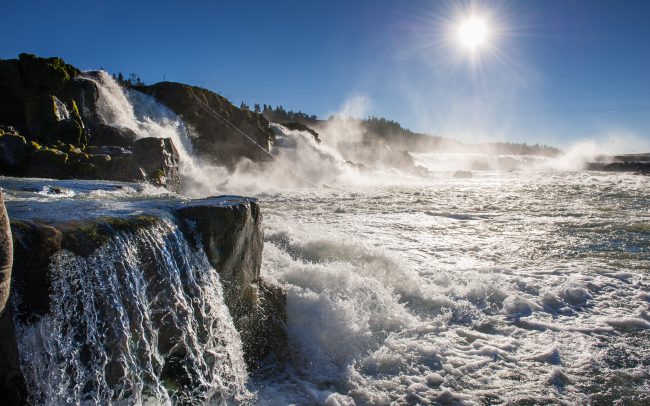Stillwater Sciences is leading a collaborative science team developing a restoration framework for the flood-prone, ecologically sensitive upper Gila River in Arizona, with coordination from the Gila Watershed Partnership of Arizona and funding from the Walton Family Foundation’s Freshwater Initiative Program. The goal of the Restoration Framework is to promote recovery of native riparian habitat and subsequent local increases in population of the endangered southwestern willow flycatcher (Empidonax traillii extimus).
The Restoration Framework is being designed to work with anticipated decline of non-native tamarisk in response to biocontrol by the tamarisk leaf beetle (Diorhabda carinulata) that is expected to colonize the tamarisk-infested riparian corridor in the very near future. Central to this effort, Stillwater is conducting an Ecohydrological Assessment—based on flood-scour potential, vegetation conditions, and soil moisture—to identify sustainable restoration sites and prioritize cost-effective restoration actions. The Assessment is considering natural and anthropogenic factors that, together, influence restoration opportunities.
Our project collaborators from the Desert Botanical Garden, Northern Arizona University, U.C. Santa Barbara, and U.S. Geological Survey are simultaneously performing other critical assessments of the river’s restoration opportunities, including pre-biocontrol vegetation monitoring, groundwater and soils investigations, and willow-flycatcher breeding-habitat modeling. This information and associated recommendations are being synthesized with our Ecohydrological Assessment to produce a comprehensive restoration plan that highlights those areas of the river corridor best suited for active restoration and, ultimately, to assist watershed managers in developing and prioritizing appropriate restoration strategies, while building the capacity of the local communities to support and participate in achieving restoration success.
Project Partners
Dr. Tom Dudley (U.C. Santa Barbara–Marine Sciences Institute), Dr. Matt Johnson (Northern Arizona University, USGS–Southwest Biological Science Center), Dr. Kevin Hultine (Desert Botanical Garden), Dr. Jim Hatten (USGS–Western Fisheries Research Center, Columbia River Research Laboratory), Dr. Christopher Neale (Utah State University–Remote Sensing/Geographic Information Systems Laboratory), Tamarisk Coalition, Cross-Watershed Collaborative, and Southwest Decision Resources









